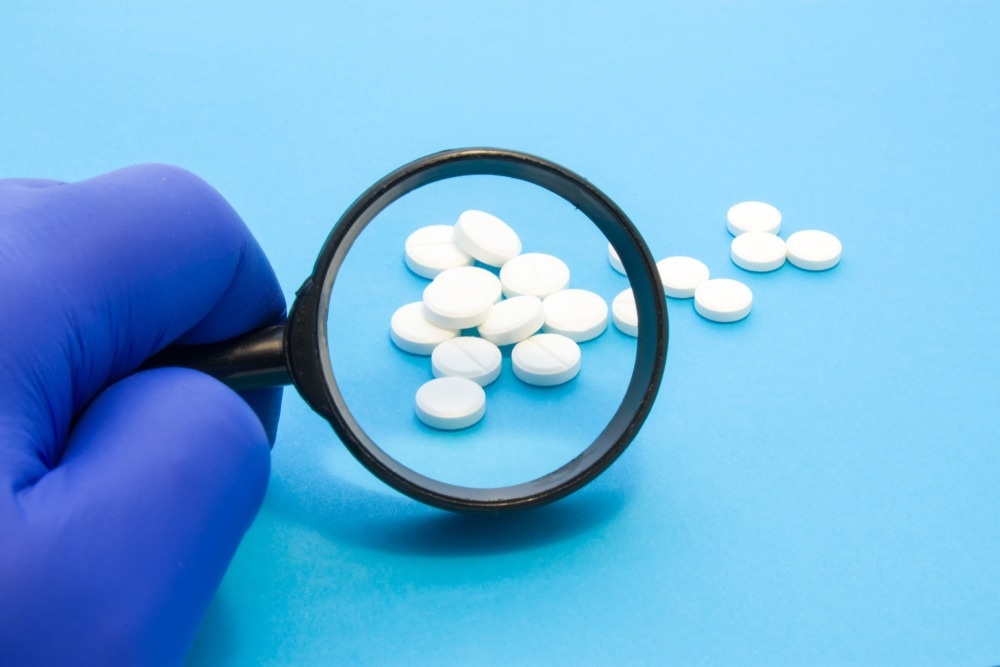The backbone of drug quality
Ensuring drug purity and potency
Quality control and compliance
Pharmacovigilance and patient safety
Global impact and regulatory harmonization
References
Further reading
Good Manufacturing Practice (GMP) is a system or protocol for ensuring product safety and consistency according to quality standards. GMP is important in all manufacturing industries, though it is frequently particularly stringent within the pharmaceutical industry, where small errors in production can lead to death via medication administration errors.

Image Credit: Shidlovski/Shutterstock.com
All aspects of the production process, from starting materials and manufacturing facilities to staff training and production methods, are covered within GMP, all of which should be documented within written processes.
Further, systems of logging ongoing quality control efforts should be implemented as proof of continuous compliance to GMP. This could include something as simple as regular temperature checks of temperature-sensitive materials during storage, where an employee manually records the temperature at specific intervals, or the random selection of drug samples from the production line for detailed chemical analysis.
The backbone of drug quality
GMP has legal components within the jurisdiction of the hosting nation of the manufacturing facility, as well as any nation selling the manufactured product. These include responsibilities for distribution, contracting of manufacturing and testing, and the response to complaints about the product.
A series of annexes to the standard GMP requirements are relevant to pharmaceutical, medical, and biological products and apply a number of specific and generally more detailed requirements relating to, for example, sterile manufacture, additional testing, and staff training.
Ensuring drug purity and potency
Besides the aforementioned requirements of standard GMP and pharmaceutical GMP, such as documentation tracking the production of a product and surrounding complaints and product recall, a number of basic requirements are in place regarding active substances used as starting materials. These systems manage product quality and ensure that the correct chemicals are used at the appropriate concentration and without the presence of any fouling agents, such as chemical or microbial contaminants.
Each of these aspects must be examined by various techniques to get a full picture of the quality of a chemical precursor or product, as confirmation of only the chemical's identity without acknowledgment of concentration could ultimately influence the potency of the manufactured drug. In turn, a patient may be thought to have received a specific quantity of a drug requiring careful dosing when, in fact, another had been received, perhaps fatally.
Similarly, the presence of chemical or microbial contaminants could have a seriously deleterious effect on patient health, particularly where one potential side-product of the manufacturing process is a similar but toxic compound. For example, the (R)- and (S)-enantiomers of thalidomide are, respectively, an effective anti-emetic and sedative or a dangerous teratogenic compound.
In the mid-20th century, this was not known, and as a result, around 10,000 infants around the world were born with deformed limbs. In truth, the isomers are capable of interconverting within the body, so separating the (S)-enantiomer during manufacture would have been ineffective.
Quality control and compliance
The methods utilized in the manufacture of pharmaceutical or biological products shape the appropriate requirements of GMP regulatory compliance and often generate specific considerations arising from the nature of the product.
Conventional drugs generally follow a typical synthetic chemical route and thus have extensive regulations relating to product quality checkpoints, continuous monitoring for signs of reagent degradation, and the state and design of facilities and protocols. A gamut of additional regulations apply to biotechnology manufacturers, such as those producing proteins, cells, genes, or other biological components for the pharmaceutical industry and research.
Given the complex nature of biotechnology manufacture and associated GMP regulatory compliance, a number of companies specializing in this type of work are prominent within the industry and perform contract work in the production of these custom products.
GMP does not cover safety relating to staff involved in manufacturing and only the safety of the end consumer as it relates to the product. Staff safety controls are the employer's responsibility and are covered by various local and regional legislation and other manufacturing organizations.
Pharmacovigilance and patient safety
As discussed, GMP requires that companies have procedures in place to receive complaints and other reports about the product from any location where it is available. This is largely related to pharmacovigilance, which monitors long-term pharmaceutical effects, including negative side effects not noted during clinical trials.
Many negative effects of a drug may take years or decades to manifest, and thus, effective pharmacovigilance allows companies and authorities to act quickly and issue a product recall should an association be discovered.
Global impact and regulatory harmonization
The first draft GMP document was adopted by the World Health Assembly, the decision-making branch of the World Health Organization (WHO), in 1969, and numerous supplements have been produced since that cover certain products in ever greater detail as manufacturing processes evolve and develop.
The World Health Assembly is composed of experts from member nations around the world and can enact legally binding conventions and regulations to which member states must abide.
References
- Gouveia, B. et al. (2015). Good manufacturing practices for medicinal products for human use. J. Pharm. Bioallied Sci., 7(2). 10.4103/0975-7406.154424Good
- Manufacturing Practices (no date) World Health Organization. World Health Organization. Available at: https://www.who.int/teams/health-product-policy-and-standards/standards-and-specifications/gmp#:~:text=GMP%20defines%20quality%20measures%20for,the%20production%20of%20pharmaceuticals%20and (Accessed: 4 October 2023).
- Guides: Global Health Law Research Guide: World Health Organization (WHO) (no date) World Health Organization (WHO) - Global Health Law Research Guide - Guides at Georgetown Law Library. Available at: https://guides.ll.georgetown.edu/globalhealthlaw/WHO (Accessed: 4 October 2023).
Further Reading
Last Updated: Oct 4, 2023